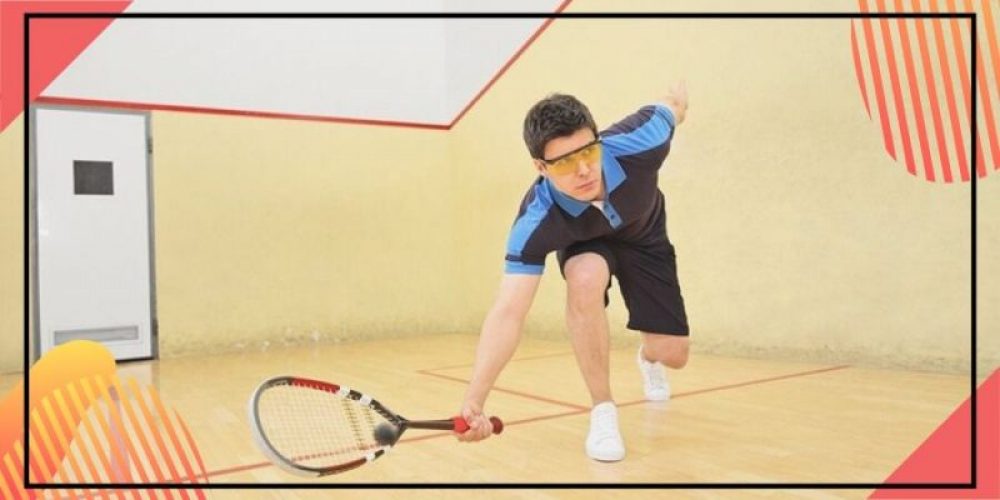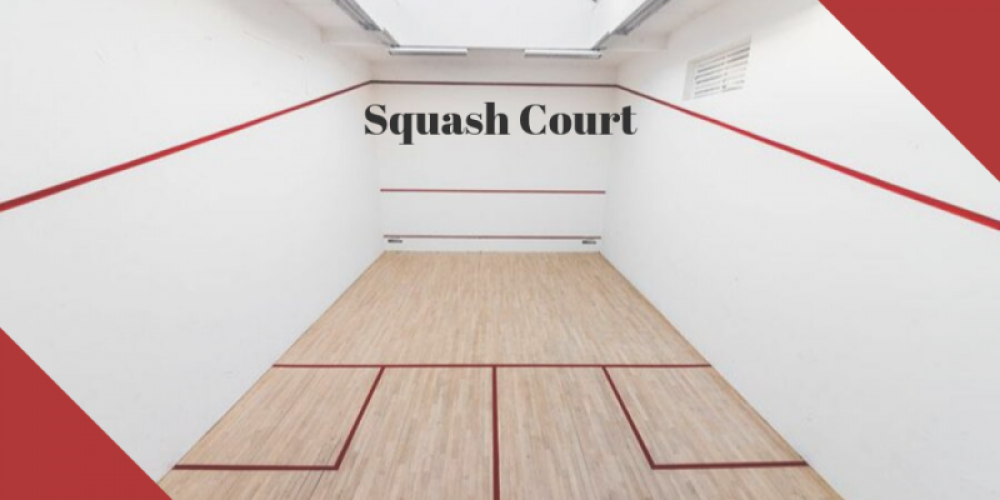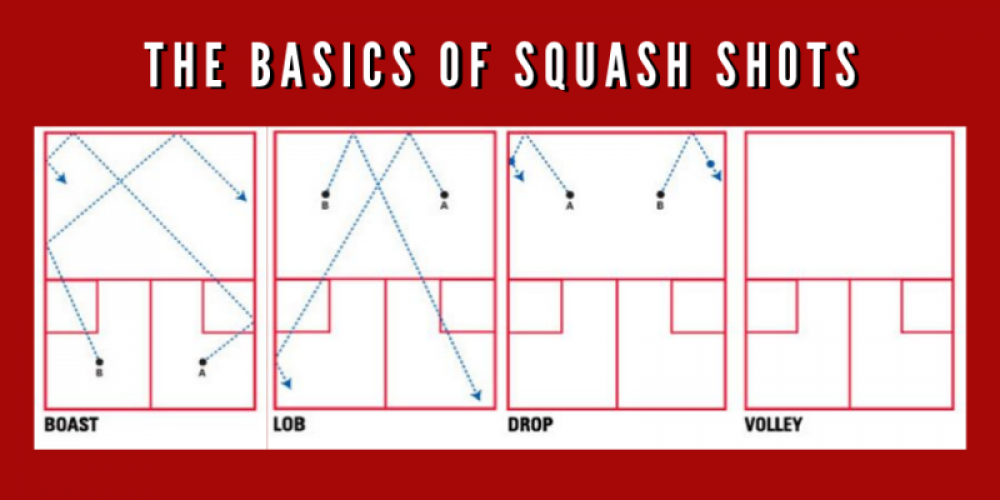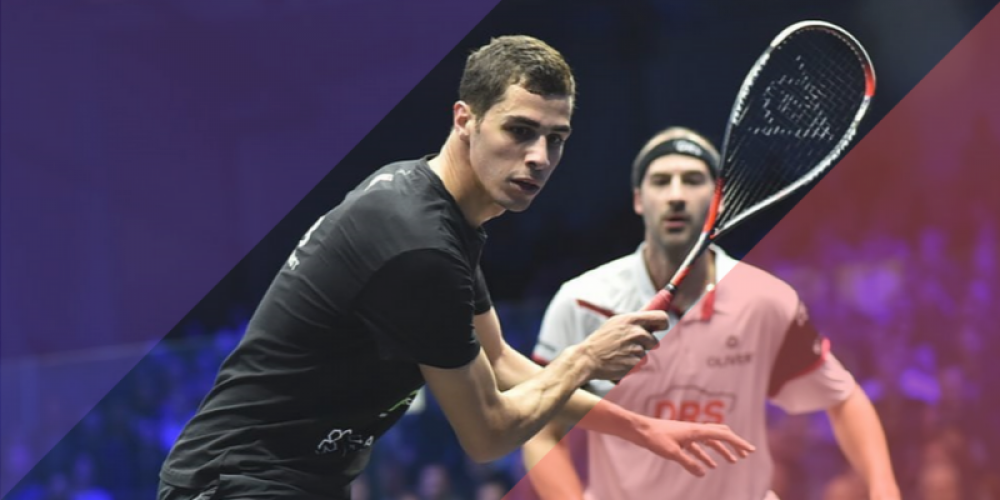
If you’re looking to pack a whole lot of exercise into a very short time and you want to have fun while you’re doing it, then squash could be the game for you. Be warned, proper squash games are very fast-moving and full-on. The good news for beginners, however, is that you can practice squash on your own, so you can improve your technique and fitness before you start playing matches.
The Basics of Playing Squash
From this point on we’ll be referring to squash as played one on one. Most of this article will apply to the doubles game as well, but there are slight differences in the court size, rules and scoring, which you will need to check if you are interested in playing this version of the game.

Anyone can play Squash
If you want to compete seriously at tennis, then height helps a lot. You do get the odd shorter pro, but for the most part they are all well above average height, especially at the very peak of the sport.
In squash by contrast, you can see players of all sizes competing successfully. Taller players have more reach, but smaller players tend to find it easier to maneuver around a compact space.
Squash can be played by people of all fitness levels, the key to making this work is to make sure that you play with people who are either at a similar level of fitness or who are prepared to go gently with you.
All players need to warm up properly before playing squash. This is important with any game and particularly with fast-paced, games like squash which use just about all muscles.

Squash equipment is very affordable
All you need to get started in squash are some sports clothes, decent trainers, goggles, a squash racket and a squash ball. Here are some points on each.
- Sports clothes - assume you are going to get seriously sweaty. Light and breathable is definitely the way to go.
- Trainers - basketball trainers are your best bet (to get started) and sports venues will expect them to be totally clean.
- Goggles - seriously, they will stop you getting a black eye if the ball lands on your face as will almost inevitably happen from time to time.
- Squash rackets - these are smaller and lighter than tennis rackets and very affordable.
Sports ClothesTrainersGogglesSquash racketsSquash Balls
Previous
Next
- Squash balls - these come in five grades identified by the colour of the dot on the top of the ball.

All ball types are made of two pieces of rubber glued together and have a hollow core. They need to be warmed up before play begins. In official matches, players are allowed four minutes to do this. In recreational play, people can take as long as they like but at least four minutes is advisable.
Pro tip, this warm-up period is for the ball. Players should already be warmed up.
Understanding a Squash Court
Squash is played on indoor courts which are 9.75M by 6.4M in size (for a standard singles game) and surrounded by walls on all sides. The long side of the court is divided into two (slightly) unequal halves (5.44M and 4.31M). This division is indicated by markings on the court rather than by a net and is known as the short line (alternatively the mid line or cut line).

The larger half of the court is directly in front of the front wall. The front wall has three lines marked on it. The line at the bottom of the front wall is called the in line (or the tin). The line in the middle of the front wall is called the service line and the line at the top of the front wall is called the out line.
The smaller half is in front of the back wall (the door to a squash court is in the back wall). This smaller half is further divided into two areas of 4.31M by 3.2M. Again, this is marked by a line, which is called the half-court line. Each half of the court also contains a small box just behind the short line by the appropriate side wall. This is known as the serving box.
The Fundamentals of Game Play
To start a game players twirl their rackets to see who serves first.
The player who serves has to keep one foot completely in the service box and flat on the ground. They aim to land the ball so that it hits the front wall between the service line and the out line and then bounces in the opponent’s half of the court, behind the short line (assuming the opponent allows it to do so). It is perfectly acceptable for the ball to bounce off the side wall as it travels.
After this, players take turns at trying to hit the ball before it bounces twice, each shot must hit the front wall (again, it is permissible to hit the side wall before or after the front wall, but the ball must hit the front wall) and must stay within the playing lines.
They continue until one person is unable to make a valid shot and their opponent wins the point. If the opponent served first, then they serve again from the opposite serving box. If the opponent was returning serve, they now serve and can serve from either service box.

The Basics of Squash Shots
There are really only four (possibly five) types of squash shot, although some of them are very tricky to master. Like everything else, practice makes perfect.
Boast shots
These are your “bread and butter” squash shots. Boast shots hit either the back wall or a side wall before hitting the front wall. There are attacking boast shots and defending boast shots. The former are played when you are in front of your opponent and the latter are played when you are behind them (physically rather than in terms of the score).
Lob shots
Lob shots should go up high, over your opponent’s head to land softly in one of the back corners. Basically the idea is to buy yourself some time and so this move works best when your opponent is already positioned towards the front wall.
Drop shots
Drop shots basically drop off the front wall. The idea is that you aim the ball so that it lands just within the out line (high enough to be hard to reach) and loses energy on impact so it just drops to the floor making it very hard to return.
Drop volleys
These are basically the same idea but you hit the ball before it bounces, thus minimizing the time your opponent has to respond. Drop volleys are probably the hardest shots to master but if you can get to grips with them you can make life hard for any opponent.
The Scoring System
In theory, there are two scoring systems for squash. The U.S. system is Point-A-Rally and players score points regardless of who serves. Under this system a player needs 11 points to win a game and 5 games to win a match. If a game is tied 10-10 it goes on until a player is ahead by 2 clear points.
The English system is called “Serve In” and only the player who serves can score a point. Under this system a player needs 9 points to win a game and 5 games to win a match. If a game is tied 8-8, the player who is receiving serve decides whether they want to play for 9 points or 10.
In practice, the U.S. system is used just about everywhere including the UK these days, but if you’re playing competitively you’ll need to know what the rules are. If you’re playing for fun, you can decide the scoring system yourselves.
Health and Safety
It’s no joke in squash. You have two humans with rackets and a rubber ball all moving at high speed around a small space. That being so, the rules of squash mandate that you use your common sense and politeness. Rather than going into the details, we’ll just summarize the basics. Do everything you can to stay out of your opponent’s way and avoid hitting them with your racket or the ball. If you expose them to injury risk, expect to be penalized (even if it was through carelessness rather than malice).
Getting Started Playing
In theory you could look up the websites for England Squash, or its counterparts in Scotland, Wales or Northern Ireland. In practice, squash is so popular that you could probably find somewhere to play just by checking the internet for your local area or even popping into your local sports venue and asking them. There’s a good chance they’ll have a squash court and may be able to point you in the right direction for coaches and opponents.
Getting to grips with the game
Squash is one of those games where you can grasp the basics in a matter of minutes and probably be able to apply them after just a short period of practice, but you can literally spend a lifetime mastering its skills and strategy. Here is a quick run down of the basics to help speed you on your way.

Serve and return of serve are vital
As with most racket sports, you can, literally, win a point just with a serve. You probably won’t but you will put your opponent under maximum pressure. As soon as you serve, try to get yourself into the middle of the court to respond to your opponent, remember to avoid obstructing them.
In principle, you could also win a point with a great return of serve. Again, in practice you probably won’t but you should aim to force your opponent to one of the ends of the court and take over control of the mid court yourself.
Squash matches are won in the middle
In squash the middle ground is the place with the most control and flexibility. You want to own it yourself and send your opponent running from one side of the court to the other. Obviously, they want to do the same to you!
Deception is often crucial to success
As a minimum, you want to limit your opponent’s ability to anticipate your moves. Ideally, you literally want to send them in the wrong direction.

The four basic approaches to a game
Most players approach squash games in one of four basic ways.
- Power games
Power players are the heavy hitters of the squash world. They tend to be strong (and often tall) and aim to win by wearing down their opponents until they just don’t have the energy to respond.
- Shot games
Shot makers don’t necessarily have the strength (or height) of the power players, but they have great technical skills. They aim to win by their ability to land the most difficult shots with great accuracy.
- Retrieval games
Retrievers focus on retrieving balls and returning shots and serves. They aim to win by taking an opponent’s play and turning it to their advantage.
- Attrition games
Attrition players aim to keep everything moving quickly. They aren’t necessarily the strongest players or the most technically skilled or the greatest strategists, so they aim to win by using their speed and endurance to wear out the other player. Essentially it’s the same idea as power play but a different implementation.
In short
Squash is an easy game to learn but a challenging game to master. You can just knock a ball about a court for fun and fitness or dig in to the shots and strategies. The game is really popular (it probably helps that it’s very affordable compared to many other sports including tennis), which means it’s usually very easy to find courts, coaches (if you want them) and players, regardless of whether or not you want to play in a club. As an added bonus, the fact that it’s played indoors means that weather is never an issue.
Fitness fanatic and always on the move. Carly is a certified personal trainer and currently teaches spin class, Zumba, and Body Pump amongst a few others. Carly has a PhD/MSc in Sport and Exercise Nutrition so she really knows her stuff and has worked in fitness and health all her life. We are honoured to have her as a member of the team. Carly has an infectious laugh, loves terrible, terrible jokes and her dog Trevor and often works with a local mental health charity


![How to Get into Squash – [Professional Guide]](https://fitnessauthority.co.uk/wp-content/uploads/thumbs_dir/getting-into-cycling-13-omsozawmt05edqziurq25lpvl765rdqmb738kx4ncs.jpg)
![How to Get into Squash – [Professional Guide]](https://fitnessauthority.co.uk/wp-content/uploads/thumbs_dir/how-to-get-into-omsotnvhssfgpz6fsbyn70yb9yyvkrclja6cx5hoos.jpg)









